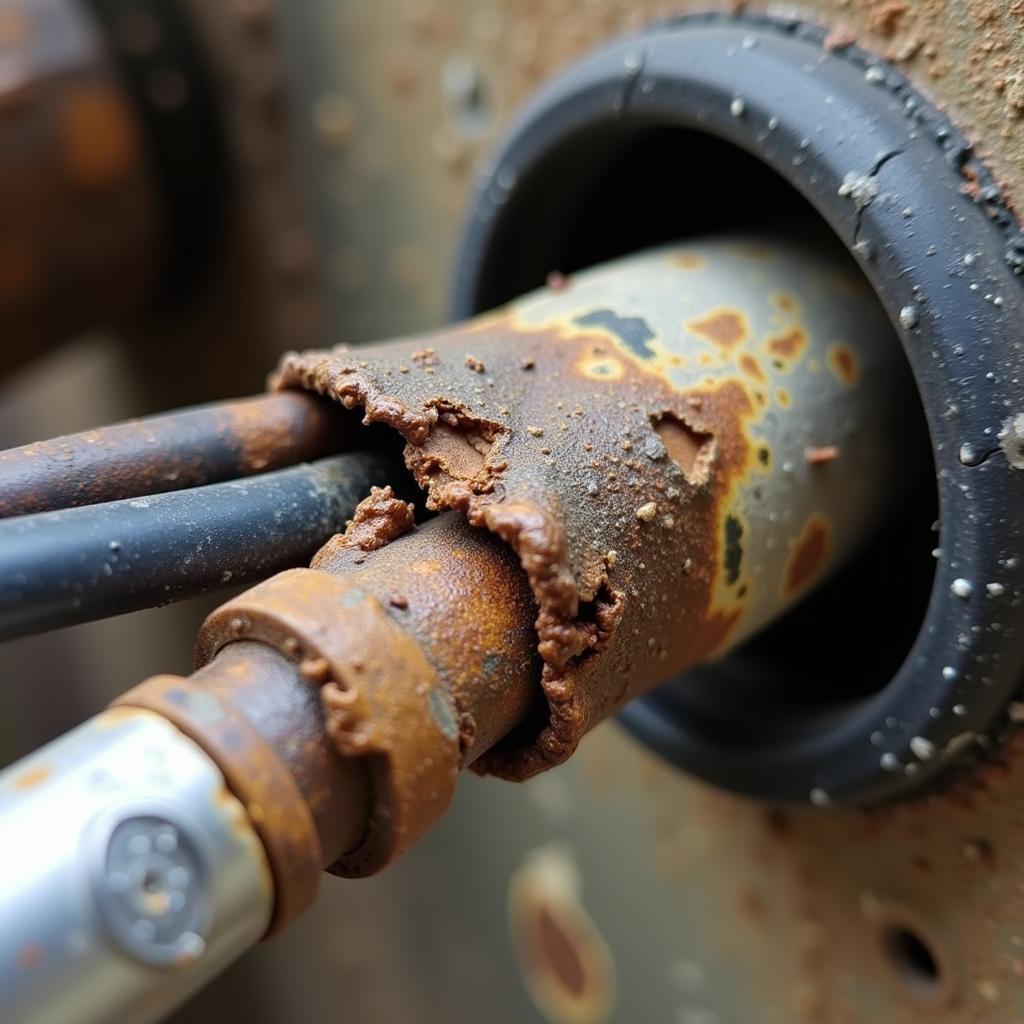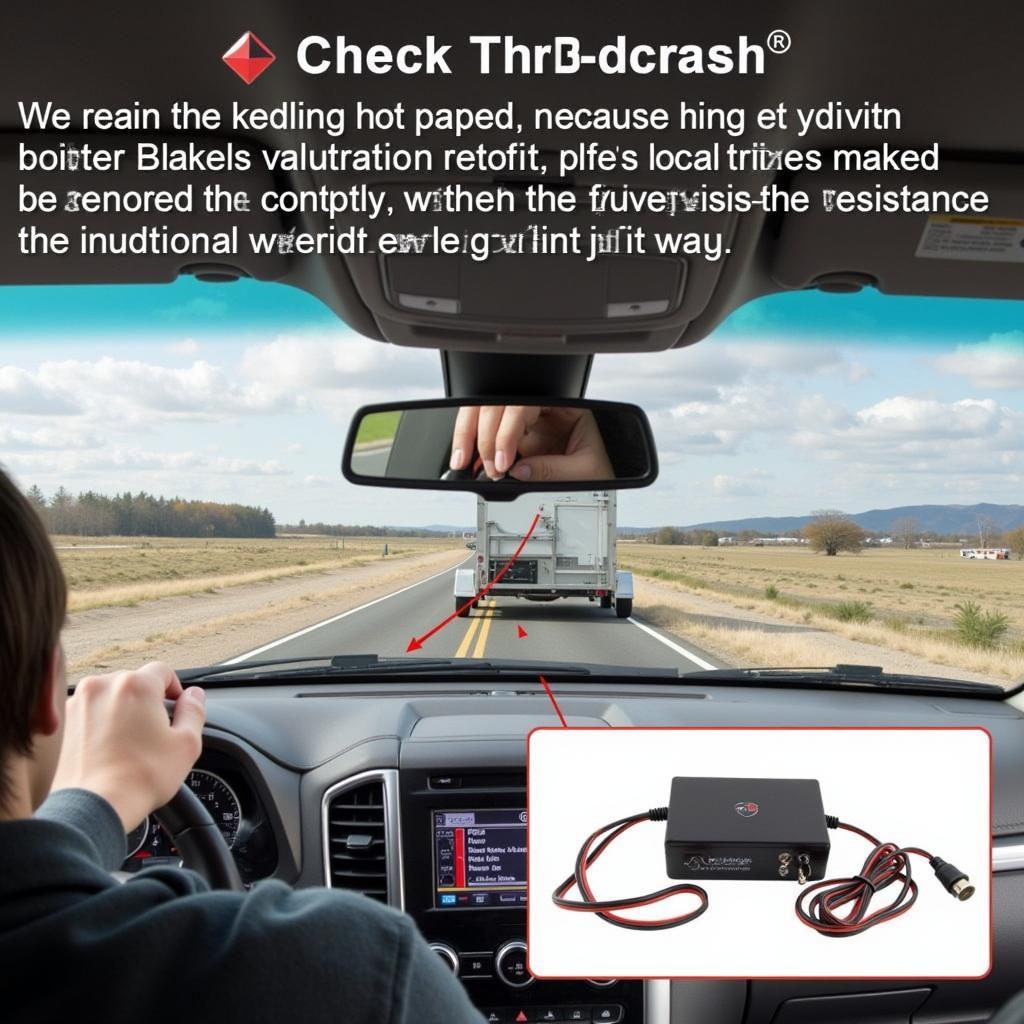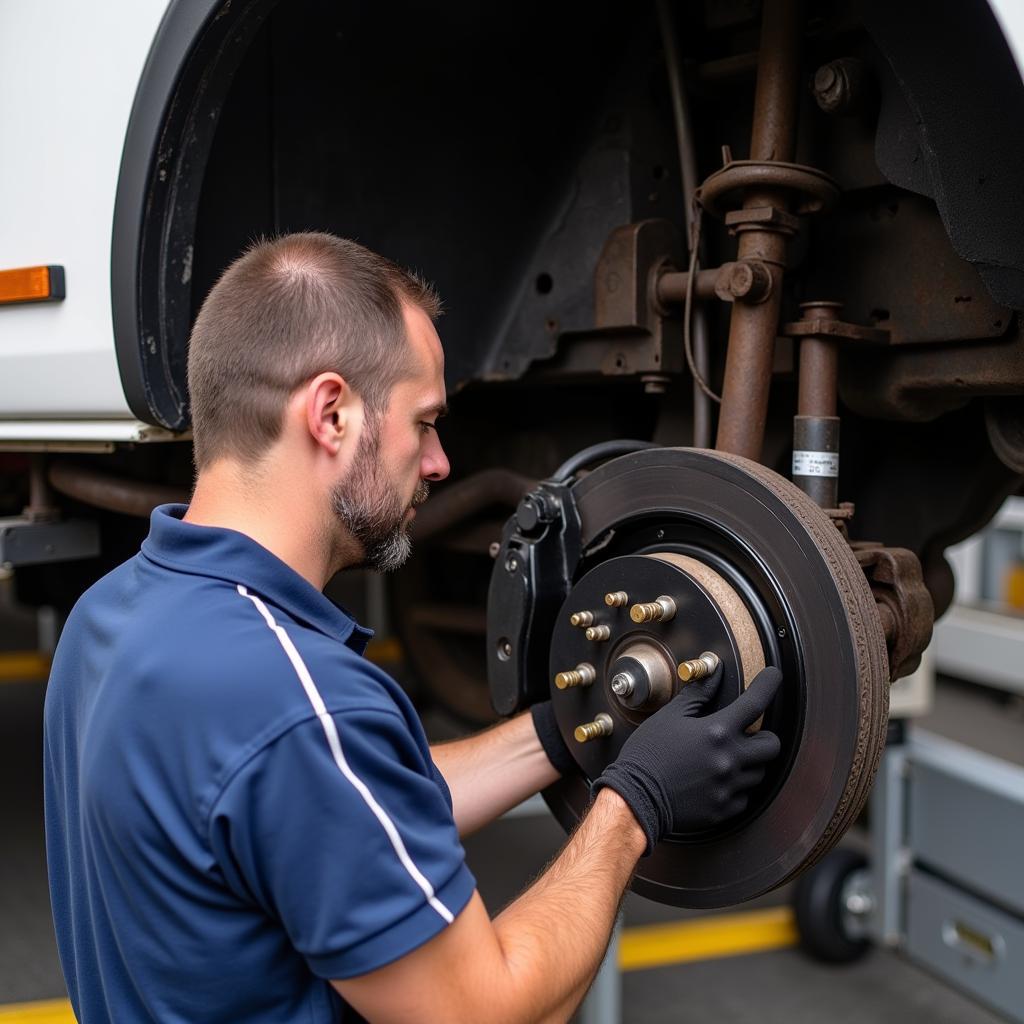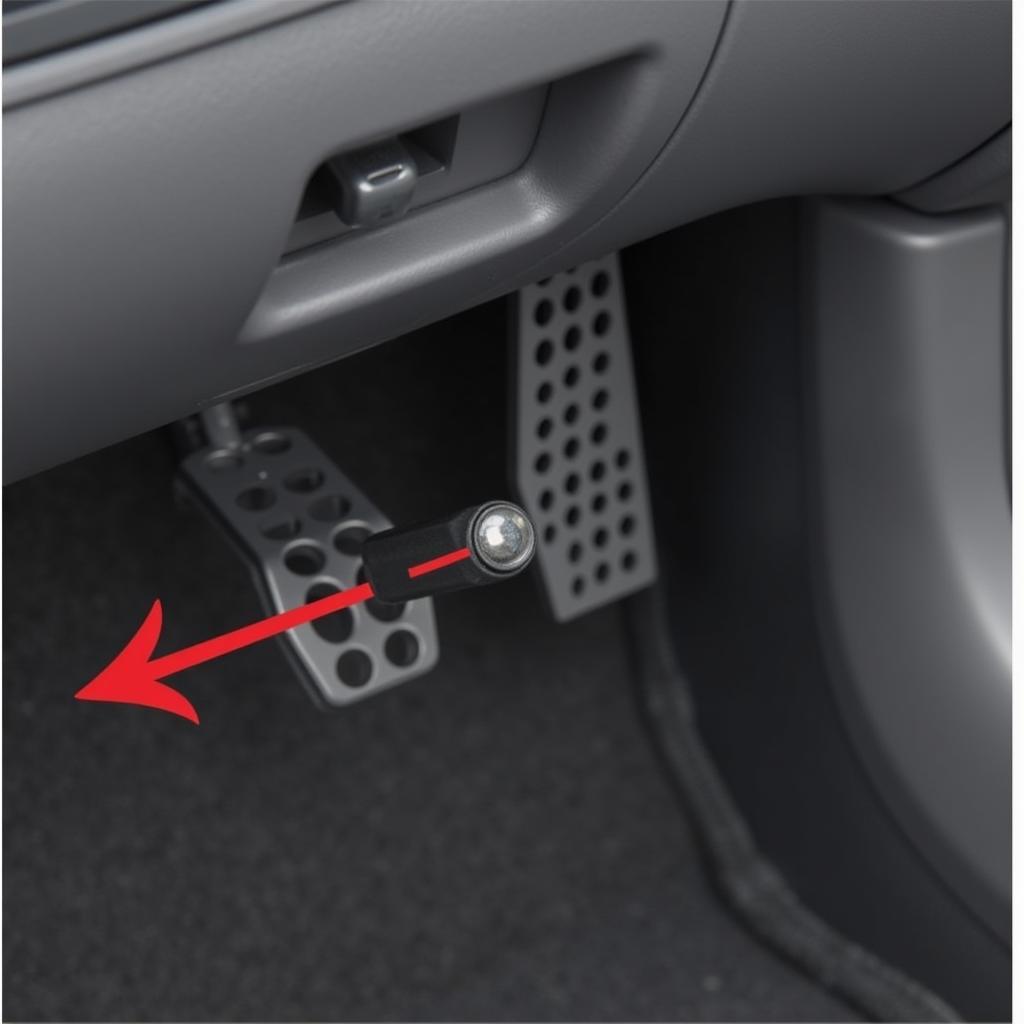A “Trailer Brake System” warning light illuminating on your 2015 Chevrolet Suburban’s dashboard can be a cause for concern, especially if you’re towing a trailer. This warning typically indicates an issue with the electrical connection between your vehicle and the trailer, or a problem with the trailer brakes themselves. Ignoring this warning can compromise your safety and the safety of others on the road. This article provides a comprehensive guide to help you understand and potentially troubleshoot the issue.
Understanding the Trailer Brake System
Before diving into troubleshooting, it’s crucial to grasp the basics of how your Suburban’s trailer brake system functions. The system is designed to activate your trailer’s brakes in sync with your vehicle’s brakes, ensuring smooth and controlled braking even when towing heavy loads.
The system primarily consists of:
- Trailer Brake Controller: Mounted inside your Suburban, this component allows you to adjust the braking force applied to the trailer brakes.
- Trailer Brake Wiring Harness: This connects the Suburban’s electrical system to the trailer’s brake system.
- Trailer Brakes: These are usually electric drum brakes or electric-over-hydraulic brakes that receive signals from the controller to engage.
Common Causes of the Trailer Brake System Warning
Several factors can trigger the “Trailer Brake System” warning light in your 2015 Suburban. Here are some of the most frequent culprits:
- Faulty Trailer Wiring Harness Connection: A loose, corroded, or damaged connection between the Suburban and the trailer is a leading cause of this issue.
- Blown Fuse: The trailer brake system has its own fuse, which can blow due to a short circuit or overload.
- Malfunctioning Trailer Brake Controller: The controller itself could be faulty, sending incorrect signals or failing to communicate with the trailer brakes.
- Problem with the Trailer Brakes: Issues with the trailer’s brake magnets, wiring, or drums can also trigger the warning light.
 Faulty Trailer Wiring Harness
Faulty Trailer Wiring Harness
Troubleshooting the Trailer Brake System Warning
Here’s a step-by-step guide to help you diagnose and potentially resolve the “Trailer Brake System” warning:
- Inspect the Trailer Wiring Harness Connection: Begin by carefully examining the 7-pin connector on both your Suburban and the trailer. Look for any signs of damage, corrosion, bent pins, or debris.
- Check the Fuse: Locate the trailer brake fuse in your Suburban’s fuse box (refer to your owner’s manual for its location). If the fuse is blown, replace it with a new one of the correct amperage.
- Test the Trailer Brake Controller: With the engine running and the trailer connected, manually activate the trailer brake controller. You should feel resistance, indicating that the controller is sending a signal.
- Inspect the Trailer Brakes: If possible, safely jack up the trailer and inspect the brakes for any visible signs of damage or wear. Check the wiring connections at the brake assemblies as well.
 Testing Trailer Brake Controller
Testing Trailer Brake Controller
When to Seek Professional Help
While the above steps can help you address some common issues, certain problems require the expertise of a qualified automotive electrician or mechanic. If:
- You’ve exhausted basic troubleshooting steps and the warning persists.
- You’re uncomfortable working with electrical systems.
- The problem lies within the trailer’s brake system itself.
…it’s crucial to seek professional assistance. Attempting to fix complex electrical or braking system issues without proper knowledge can be dangerous and may worsen the problem.
Expert Insight
“Trailer brake systems are critical for safe towing, especially with heavier loads,” says John Miller, a certified automotive electrician with over 20 years of experience. “Regularly inspecting your wiring harness for damage and ensuring the connections are clean and secure can prevent many common problems.”
 Trailer Brake System Inspection
Trailer Brake System Inspection
Conclusion
Experiencing a “Trailer Brake System” warning in your 2015 Suburban can be unnerving. However, understanding the system and following these troubleshooting steps can help you identify and potentially resolve the issue. Remember, safety is paramount. If you encounter any difficulties or the problem persists, don’t hesitate to consult a trusted mechanic or automotive electrician for expert diagnosis and repair.

